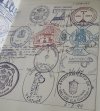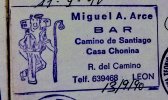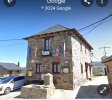- Time of past OR future Camino
- CF 2023 sept/Oct
Primitivo July 2024
*update
I finished, or rather skimmed through the last chapters of the book yesterday (although I haven't read the epilogue yet), the whole account of the last 24 or so hours into Santiago was difficult to follow and just seemed so crazy - maybe because she was been chased by hundreds of journalists, but I just couldn't read it. I really don't know what is true in the book and what isn't. It's a shame as for me the book started so well and I thought I was really going to enjoy it.
However, one thing that was discussed further up was the foot-bathing at the end in Santiago which someone said was in the pilgrims office. But in the book it seems this was done by the priest in the Cathedral? But then perhaps back then they were both one and the same?
I finished, or rather skimmed through the last chapters of the book yesterday (although I haven't read the epilogue yet), the whole account of the last 24 or so hours into Santiago was difficult to follow and just seemed so crazy - maybe because she was been chased by hundreds of journalists, but I just couldn't read it. I really don't know what is true in the book and what isn't. It's a shame as for me the book started so well and I thought I was really going to enjoy it.
However, one thing that was discussed further up was the foot-bathing at the end in Santiago which someone said was in the pilgrims office. But in the book it seems this was done by the priest in the Cathedral? But then perhaps back then they were both one and the same?















